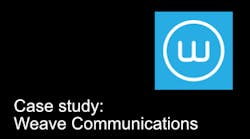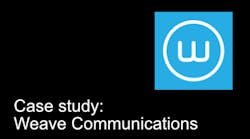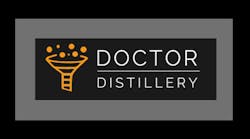The industry's best kept secret for getting more dentists on the phone
In this dental industry marketing case study, Doctor Distillery CEO Naomi Cooper explains how one small yet critical change paid off big for dental software startup Weave Communications.
Inbound digital marketing is a hot topic in the dental industry—and for good reason. Inbound tactics are more trackable, timely, and targeted than most other marketing methods available to business-to-business marketers.
However, this doesn’t mean that inbound marketing is without its challenges. Dental marketers first have to choose mediums based on their ability to target the desired audience—dentists. Next, they have to hone budgets, messaging, and internal processes to find that sweet spot where high-quality leads attributed to the campaign come in at a cost that makes sense for the product’s bottom line.
It’s critical to measure what is often referred to in marketing as the “branding effect.” Today, we consider branding an integral part of full-funnel marketing, and in the world of full funnel, even branding is inherently measurable. A marketing director can track a rise in brand queries via search engines, i.e., a lift in search engine and direct traffic to the company website. And yes, highly targeted digital branding can even lead to an overall increase in form submissions or leads on the website as a direct result of branding efforts.
However, the most frequently overlooked aspect of inbound marketing is that getting quality leads is just half the battle. An airtight sales process must be in place within your organization to ensure that each lead is followed up with correctly and efficiently to maximize set rates, conversion rates, and ultimately your ROI. Otherwise, the dollars that the marketing team spends to generate sales leads go to waste, and that’s a challenge that no marketing medium can overcome.
No team of dental industry marketers may understand this better than the marketing department at Weave Communications. I will explain what I mean using the following case study.
Plenty of high-quality leads
Weave has helped revolutionize dental patient communication and front desk processes by syncing a dental practice phone systems with practice management software, resulting in a simple desktop tool that helps the dental team work together and interact with patients more efficiently and effectively. Back in 2014, I was working with Weave in a consulting capacity, strategizing ways to help them generate better quality leads online. Weave, along with several of my other clients, were in need of a more effective way of reaching dentists, and none of the existing solutions were sufficient. So, in early 2015, I brought Weave on board as one of the first beta clients for Doctor Distillery, an online advertising platform, of which I am a co-founder. We offered Weave an audience of 180,000 US dentists, who we could reach everywhere they traveled across the Internet.
Specifically, Weave’s objective was to increase the number of virtual software demos. From the outset of the campaign, the Doctor Distillery campaigns worked successfully for them, averaging a 50% set rate. In other words, 50% of dentists who requested a demo via a web form actually set and showed up for an appointment with a sales rep for a virtual demo. This trend continued for nearly 18 months.
Things began with great success, as evidenced by this quote by Benjamin Ard, Weave’s digital marketing director: “The leads received from our Doctor Distillery campaigns are high quality, consistently delivered on time, and externally managed, which frees my team to focus on additional lead-generation efforts.” Ard adds, “We have tried a variety of traffic sources over the years, from Google AdWords to tradeshows to endemic advertising, and Doctor Distillery remains one of our favorites.”
But then Weave began to notice something—a sudden drop in conversions.
A mysterious dip in conversions
In the fall of 2016, the Weave team noticed that the set rate of the Doctor Distillery leads had begun to slowly fall, reaching its lowest point—about 30%—in December of 2016. Because Weave had a pre-set lead qualification process already in place, and the source of the leads hadn’t changed, Ard knew that it wasn’t the quality of the leads. The prospects they were getting were dentists, their target customers, but after a deep analysis, the team at Weave realized that there was an almost imperceptible but consistently growing time delay between the time when the lead was submitted online and the moment when the sales team actually followed up with each lead. This delayed reaction, they surmised, was causing the set rate to plummet.
Searching for a solution
To solve this conundrum, Weave set an internal goal for sales reps to communicate with leads within 5 minutes or less of the time of the online lead submission.
A pilot program isolating all Doctor Distillery leads and routing them to a top sales rep who was committed to the five-minute response timeframe was conducted through the month of January 2017. Every lead received by Weave was followed up with immediately via text message within 5 minutes, as well as with a phone call within 15 minutes for all leads received within business hours. Leads received outside of business hours were followed up on first thing the next morning (before 9:00 a.m. local time). No other changes were made to the campaign in order to make it a pure test of specific variables.
At the end of the month, Weave’s team reviewed their numbers. They discovered that their demo set rate had skyrocketed from the low of 30% to over 70%, all as a result of the improved response time.
Lessons learned
Weave’s sales team reported that dentist prospects were pleasantly surprised to be contacted so quickly, and that they were able to capitalize on the fact that Weave software (and the action the doctor had taken to request a demo) was still at the top of prospects' minds.
“It’s amazing how much easier it is to get a customer to focus on our product if they are contacted within minutes of lead submission. If too much time goes by, they have usually moved on to something else,” says Ard.
It’s important to note that improved set rates and conversion rates from faster follow-up times is a widely applicable concept, not an isolated phenomenon. In fact, according to a recent study, an online lead is nine times more likely to convert if contacted within five minutes of submission. (1)
Weave believed in their product, and understood the potential that inbound marketing could bring to their organization. They took a hard look at their internal processes, and by making one seemingly minor, yet very consequential change, they were able to completely transform their demo set rates—and, as a result, their ROI.
If your marketing team is stuck in a marketing rut, or if you are tired of lackluster results from your inbound efforts, perhaps it’s time to examine your lead sources to ensure you’re reaching a highly targeted audience made up exclusively of dentists. But another culprit could very well be your sales team’s follow-up timeframe. Take a closer look at your lead management process: You may just find that mastering the handoff from marketing to sales could be the ticket to maximizing return on your marketing dollars.
Reference
1. https://www.nowblitz.com/blog/unbelievable-lead-generation-statistics-will-make-hustle-harder/
More dental industry marketing articles by Naomi Cooper:
5 pitfalls product managers can avoid when marketing to dentists online
3 ways to win over more dentists online
The top 4 most influential dental marketing trends of 2016
Editor's note: This article first appeared in the Apex360 e-newsletter. Apex360is a DentistryIQ partner publication for dental practitioners and members of the dental industry. Its goal is to provide timely dental information and present it in meaningful context, empowering those in the dental space to make better business decisions. Visit the Apex360 home page here, and subscribe to the Apex360 e-newsletter here.









